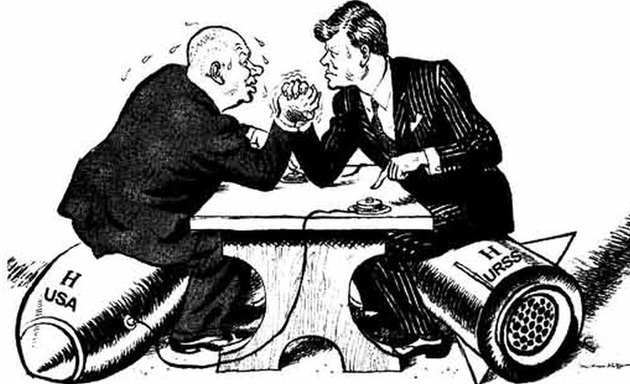THE Queen Victoria (1819-1901) was Queen of the United Kingdom and Ireland from 1837 to 1901 and Empress of India from 1876 to 1901.
Her reign lasted 63 years and was a time of great industrial development. Likewise, the United Kingdom became a British Empire, with colonial possessions from Africa to India.
Childhood and Training
At first, Queen Victoria was not destined to be queen. Her father Prince Edward, Duke of Kent, was the fourth son of King George III (1738-1820). However, her three uncles had no legitimate children and when Victoria was born, she became fifth in line to the throne.

Thus, after her father's death in 1820, and the fact that there were no more children in the family, she was declared the presumptive heir to the throne in 1830. From then on, she would be brought up under the strictest supervision of her mother and a housekeeper.
Growing up, however, Victoria's mother and her secretary, John Conroy (1786-1854), plotted to continue influencing the heiress when she ascended the throne. They even tried to force her to sign a document naming Conroy as her senior adviser, but she refused to do so.
After the death of her uncle, King William IV (1765-1837), Princess Victoria ascends the throne and begins what will be the second longest reign in the history of the United Kingdom.
Wedding
Victoria married her cousin, Prince Albert of Saxe-Coburg and Gotha (1819-1861), in 1840. In love with each other, the union lasted twenty-one years, and produced nine children.
- Victoria (1840), Princess Royal, married to the German Emperor Friedrich III.
- Edward VII (1841), King of the United Kingdom and Emperor of India, married Princess Alexandra of Denmark.
- Alice (1843), married to Ludwig IV, Grand Duke of Hesse and Rhine
- Alfred (1844), Duke of Edinburgh and of Saxe-Coburg and Gotha, married to the Grand Duchess Maria of Russia.
- Helena (1846), married to Prince Christian of Schleswig-Holstein.
- Louise (1848), married to John Campbell, 9th Duke of Argyll.
- Arthur (1850), Duke of Connaught, married to Princess Louise Margaret of Prussia.
- Leopold (1853), Duke of Albany, married to Princess Helen of Waldeck-Pyrmont.
- Beatrice (1857), married to Prince Henry of Battenberg.

Prince Albert
Prince Albert was a great advisor to the sovereign and protector of the arts and sciences that were developing at the time.
One of the prince-consort's main initiatives was the holding of the Universal Exhibition in London, in 1851. This consisted of a fair that brought together the main technological advances in the country.
He also created the Imperial College, the first British institution dedicated to the teaching of science, as well as organizing and restoring the paintings of the Royal Collection.
In addition, he had solid musical training, being an organist and singer. In this way, as patron of the Academy of Early Music and the Philharmonic Society, he expanded the repertoire of these orchestras.
He defended the end of slavery and the improvement of housing and health conditions for the working classes. So he presided over and was part of countless associations that defended these causes.
The death of Prince Albert, in 1861, would leave the sovereign away from public acts for more than a decade.
Victorian age
The long reign of the sovereign would go down in history as Victorian age. This era is marked by great technological innovations, fighting for the end of slavery, but conservative in matters relating to women's morals and rights.
Art
Much of the Victorian Era took place when the Romanticism (current that started at the end of the 18th century and lasted until the middle of the 19th century).
Thus, there was a revaluation of medieval myths such as King Arthur, the Middle Ages and Gothic architecture. Some castles were even renovated by the Royal Family.
Technological Innovations
In the 19th century, England was one of the pioneers in building railroads. Queen Victoria was the first monarch to travel by train, for example. Also, the spread of the telegraph reduced distances and connected different parts of the realm.
O Suez Canal, inaugurated in 1869, will be of fundamental importance in shortening the distances between Europe and Asia. Through this monumental work, the British were able to consolidate their conquest in Africa and the Asian continent.
Economy
The increase in land lease prices caused a large rural exodus. To give you an idea, industrial cities like Manchester and Sheffield quadrupled their population in just fifty years.
In factories, prevailed a rigid organization, controlled by the clock and foremen, where being fast and productive was paramount.
Of course, this increase brought several social problems, as there were no homes, schools and hospitals for everyone. Nor was there any protection for workers who worked twelve hours a day or more.
Politics
During the reign of Queen Victoria, the foundations for the constitutional monarchy British. The sovereign should not express his political opinions in public, remain neutral and try to gain the approval of his subjects through acts of beneficence and culture.
So, on the advice of her husband, Queen Victoria withdrew from parliamentary discussions in public, but used her influence in private. Something that happens to this day in the British political system.
For example, through her correspondence and kinship with other royal houses, she helped to prevent a repeat of the conflict between France and the German Empire in 1875.
Curiosities
- Queen Victoria popularized the use of white for the wedding dress. She chose this color so that the embroidery on her dress would stand out and also forbade the guests to wear white on her wedding day.
- She was the first British monarch to celebrate the Golden and Diamond Jubilees for her reign in 1887 and 1897 respectively, a fact that would be overcome, by 2018, by her great-great-grandmother, Queen Elizabeth II.
read more:
- English Industrial Revolution
- independence of india
- UK
- neocolonialism
- Imperialism in Africa



